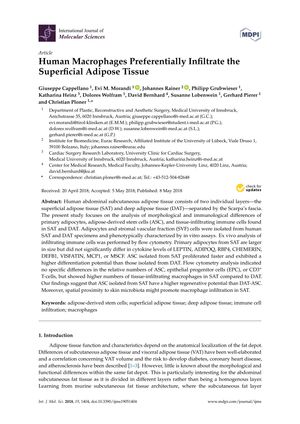TLDR Human body's immune cells are more common in the layer of fat just beneath the skin than in deeper fat layers.
The study focused on the differences between human superficial adipose tissue (SAT) and deep adipose tissue (DAT), particularly in terms of immune cell infiltration and the properties of adipose-derived stem cells (ASCs). It was found that SAT contained larger primary adipocytes and a higher number of tissue-infiltrating macrophages compared to DAT. ASCs from SAT also showed faster proliferation and greater differentiation potential. The study involved 14 female patients with a mean age of 43.6 years and a mean BMI of 25.1 kg/m². The findings suggest that SAT may have a higher regenerative potential and that its proximity to skin microbiota could explain the increased macrophage infiltration. This could have implications for therapeutic approaches using ASCs. However, the document also included a section that could not be parsed as it did not provide specific results or conclusions.
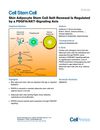 106 citations
,
October 2016 in “Cell Stem Cell”
106 citations
,
October 2016 in “Cell Stem Cell” PDGFA/AKT signaling is important for the growth and maintenance of certain skin fat cells.
88 citations
,
August 2014 in “PLOS genetics” Syndecan-1 is essential for maintaining skin fat and preventing cold stress.
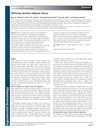 218 citations
,
May 2014 in “Experimental Dermatology”
218 citations
,
May 2014 in “Experimental Dermatology” Skin fat cells help with skin balance, hair growth, and healing wounds.
 499 citations
,
September 2011 in “Cell”
499 citations
,
September 2011 in “Cell” Fat-related cells are important for initiating hair growth.
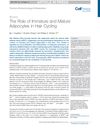 30 citations
,
December 2018 in “Trends in Endocrinology and Metabolism”
30 citations
,
December 2018 in “Trends in Endocrinology and Metabolism” Both immature and mature fat cells are important for hair growth cycles, with immature cells promoting growth and mature cells possibly inhibiting it.
8 citations
,
June 2023 in “Journal of clinical medicine” Nanofat shows promise for facial rejuvenation and treating skin issues but needs more research for long-term safety.
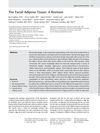 69 citations
,
December 2016 in “Facial plastic surgery”
69 citations
,
December 2016 in “Facial plastic surgery” Different types of facial fat affect aging and treatment outcomes; more research is needed to enhance anti-aging procedures.
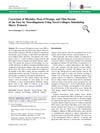 3 citations
,
June 2017 in “Aesthetic plastic surgery”
3 citations
,
June 2017 in “Aesthetic plastic surgery” The new facial treatment improved wrinkles and skin thickness, with most patients seeing results within a month, despite some temporary swelling and bruising.
 April 2024 in “Military Medical Research/Military medical research”
April 2024 in “Military Medical Research/Military medical research” Cellular and immunotherapies show promise for healing chronic wounds but need more research.
